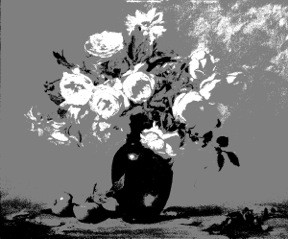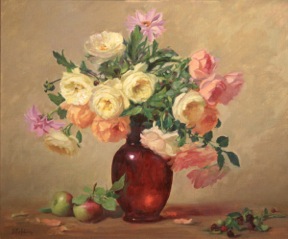Question: Are value studies really worth the extra effort?
Answer: It never hurts to work out your design as early as possible.
Just turning 76 and being marginalized with some frustrating physical issues I have just so many “great” paintings left in me and as a result I have been increasing my process of doing more value and color studies. I will mostly discuss doing the value studies as the color studies get more complicated and we only have so much time and space here to discuss things.
As an Illustration major in art school we were trained to do multiple value and color studies, comps as we called them, to work out design or composition ideas before doing a finished Illustration. They helped clarify our ideas and design and enabled us to make sure we were on the same page as the Art Director in charge of the project. I found this process to be incredibly helpful when I got into the Fine Arts and was faced with multiple choices of what I wanted to paint and get some successful results. When I am Plein Air painting I will do quick little idea/value studies to get some design ideas down on paper and especially when I am working in the studio with a more complicated landscape or multiple figure composition.
Value study 1. Color study 1.
My failure rate goes down with this process and although it is not always foolproof, I seem to end up with a lot fewer clunkers when I do a study or two..it helps me sort out confusing areas and to get a more unified painting. I use to do the value studies in oil and sometimes still do, but now am doing them mostly in conte as it is more manageable, quicker and easier to do right on the spot. Every other month or so I will take a batch of photos and do around 20 or 25 conte value studies and then pick out the best 10 of those that I feel good about, then do oil color studies of those ideas. Lastly, I pick out the best 5 or 6 of those to take on to finished paintings.
Value study 2. Color study 2. Value study 3. Color study 3.
By the time that I have gone through this process I am pretty confident that I have worked out most of the major design and color issues and am not faced with as much doubt about what will work best. That is not to say that I don’t also dive right into a canvas and let things happen as they may without doing all of this preparation – I come up with some pretty satisfying results and am convinced that there does not need to be some formula that works for me or anyone else at all times. I do find when I am doing complicated multiple figure compositions of 5 to 25 figures I need organize it with more preliminary studies to get it to where I feel that it works well. In my teaching, in general I find most students doing value or color studies usually get caught up with detail and that defeats the purpose of doing the study in order to work out the values and shapes that make up the design. It is dependent on getting an interesting arrangement of values (darks, midtones and lights), shapes and edges for a value study and for a color study an interesting arrangement of colors (which includes values), shapes and edges.
Value study 4. Color study 4.
We need to ask ourselves questions as we work these studies out and try and remember that usually balance in art means unbalance. A good example being a large dark tree will be balanced by a small dark tree – equals become boring and so on. One usually would like to have your picture more dominant with darks, or with midtones or with lights. More dominant midtones would be balance by a smaller group of darks and so on. We usually see too much, so generally work from bigger value and shape relationships to smaller.
Value study 5. Color study 5.
As we usually see too much squint down to try and see the larger value and shape relationships and not the detail and minor accents at the start Try and think in shapes and not in line. It sometimes helps to define shapes with a line but it is the massing and relationship of values and shapes that are important. Do I have a nice arrangement of large, medium and small shapes and values, some busy, busier and quiet areas to enhance the picture?
Value study 6. Color study 6.
Do I use dark and light shapes and similar colors to move my eye around the picture and sharper, softer and darker and lighter edges to help lead my eye to where I want to viewer to go? Am I using shapes of different color, but similar values to form more interesting or dominant shapes, and the same with lights and midtone? Can I change a shirt value and color, add a bush, a group of rocks, or take out things that will make the picture more compelling or beautiful?
Value study 7. Color study 7.
It really helps to be familiar with the subject so we can add or subtract things that can enhance or hinder the picture. Use imagination and ideas that will make it more of our unique voice. I hope this helps you with creating studies They don’t have to take long. They are usually quite fun and often better than our more “finished” paintings. The color studies take a bit longer but can really give a heads up on resolving a lot of major color relationships and issues early on.
Visit Ned’s website to learn more about him and wonderful work.

Only 2 months remain to be eligible to win 6 months of gallery representation and be part of the Art Muse Contest winners gallery show at Jack Meier Gallery in Houston Texas!*
*(Emerging Artist and Master Class entrants only. See contest rules for more info.)
Plus we award cash prizes of $500, $250 and $100 every month and so much more.
We are the only online contest where you compete at your skill level against a small number of artists. You won’t find odds like this anywhere else!
Don’t delay, enter today!
CLICK HERE TO ENTER
























 To learn more about David and see his portfolio of work
To learn more about David and see his portfolio of work 








































